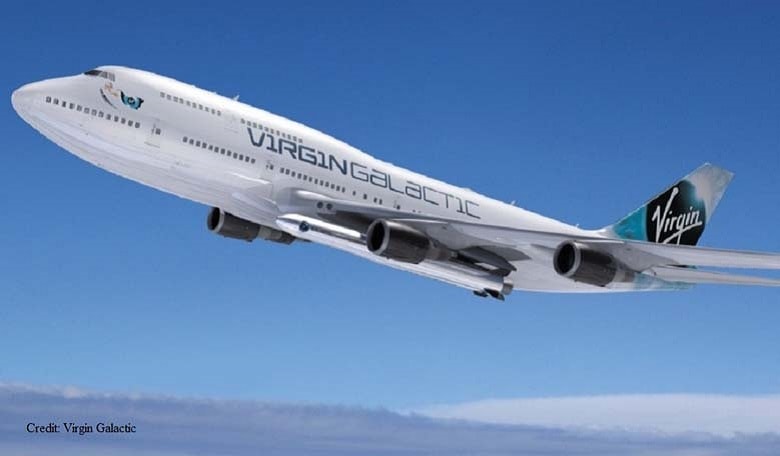Virgin Galactic has announced that it has bought a Boeing 747 jetliner to be used as its new carrier aircraft for its LauncherOne small satellite launch vehicle. The aircraft will allow LauncherOne to carry heavier payloads.
“We basically wanted to maximize the productive capacity of the Newton engines we were developing” for LauncherOne, said George Whitesides, chief executive of Virgin Galactic.
The company concluded the 747 was the best choice for carrying the enlarged LauncherOne. Whitesides said the company then did “a very comprehensive survey of the entire commercial aircraft market,” looking for used 747 aircraft with the best combination of cost, flight history and maintenance record. In the end, the company settled on a young aircraft operated by Virgin Atlantic, nicknamed 'Cosmic Girl'. The vehicle was built by Boeing in 2001 and has been in commercial service with Virgin Atlantic until October of this year. Its last commercial flight was on October 29th, from London to San Antonio.
Whitesides said the airplane will first undergo extensive inspection and maintenance known in aviation as a “D check” by VT San Antonio Aerospace. That work will be completed early next year, after which work will start on modifying the airplane to serve as the LauncherOne platform.
LauncherOne will be attached to a pylon mounted on the left wing of the 747, between the fuselage and the left inboard engine.
Whitesides said some structural elements of the wing will be strengthened to accommodate the rocket. There will also be electrical and fluid lines added to service the rocket, and updates to the plane’s avionics to support launches. That work, he said, should be done by late 2016.
While Whitesides said earlier this year that Virgin Galactic was expecting to begin LauncherOne test flights by late 2016, that schedule has since changed. “We anticipate being able to do orbital tests in 2017,” he said.
The more powerful LauncherOne will be able to carry payloads up to 200 kilograms to sun-synchronous orbits, and up to 400 kilograms to other orbits. That increase in performance allows LauncherOne to accommodate a wider range of satellites.











